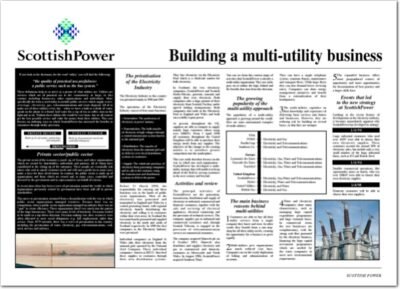The Paralympic Movement has experienced a notable increase in popularity and visibility in recent years, largely attributed to the influence of social media. Platforms including Facebook, Twitter, Instagram, and YouTube have created opportunities for athletes to share their personal narratives, promote disability rights, and interact with a global fan base. This increased social media engagement has not only raised the profile of Paralympic sports but has also significantly impacted sponsorship opportunities, branding strategies, accessibility initiatives, and activism within the movement.
An examination of the various ways social media has transformed the Paralympic landscape reveals that these digital platforms are not only influencing current trends but are also shaping a more inclusive and dynamic future for the movement.
Key Takeaways
- Social media has played a significant role in the rise of the Paralympic movement, providing a platform for increased visibility and engagement.
- Athletes are using social media to share their personal stories and advocate for disability rights, creating a powerful platform for awareness and change.
- Social media has had a profound impact on Paralympic sponsorship and branding, allowing for more diverse and inclusive representation of athletes and their stories.
- The accessibility and inclusivity of the Paralympics has been enhanced through social media, allowing fans to engage with the games in new and meaningful ways.
- Online platforms are driving social change within the Paralympic movement, amplifying the voices of athletes and advocates and promoting greater inclusivity and representation.
Social Media as a Platform for Athlete Storytelling and Advocacy
The Human Side of Paralympic Athletes
Through social media platforms like Instagram and YouTube, athletes can share their personal journeys, training regimens, and daily lives, providing fans with an intimate look into their world. This level of transparency and accessibility has humanized Paralympic athletes, breaking down stereotypes and misconceptions about disability.
Advocating for Disability Rights and Inclusion
Social media has also given athletes a platform to advocate for disability rights and inclusion, using their voices to drive meaningful change. By sharing their stories and perspectives, Paralympians have been able to raise awareness about accessibility issues, challenge societal norms, and inspire others to embrace diversity.
The Rise of Paralympic Influencers
Furthermore, social media has given rise to a new wave of Paralympic influencers who are using their platforms to promote inclusivity and diversity. These influencers are not only athletes but also advocates, activists, and content creators who are passionate about driving social change. Through engaging content, thought-provoking discussions, and collaborative initiatives, these influencers are shaping the narrative around disability and inclusion, fostering a more empathetic and understanding society.
The Impact of Social Media on Paralympic Sponsorship and Branding

The rise of social media has revolutionized the way in which Paralympic athletes and organizations approach sponsorship and branding. With the ability to reach millions of followers at the click of a button, athletes have become valuable assets for brands looking to align themselves with messages of diversity, inclusion, and empowerment. Social media platforms have provided athletes with a direct line to their fan base, allowing them to cultivate their personal brand and engage with sponsors in a more authentic and impactful way.
This level of engagement has not only increased the visibility of Paralympic athletes but has also opened up new opportunities for sponsorship deals and partnerships. Moreover, social media has allowed Paralympic organizations to craft compelling narratives around their events and initiatives, reaching a wider audience than ever before. By leveraging platforms like Twitter and Facebook, organizations can engage with fans in real-time, share behind-the-scenes content, and build excitement around upcoming events.
This level of direct engagement has not only enhanced the fan experience but has also attracted new sponsors and partners eager to align themselves with the values of the Paralympic Movement. As social media continues to evolve, it is likely that we will see even greater collaboration between athletes, organizations, and brands, leading to more diverse and inclusive sponsorship opportunities within the Paralympic Movement.
Accessibility and Inclusivity: How Social Media is Making the Paralympics More Accessible to Fans
One of the most significant impacts of social media on the Paralympic Movement has been its role in making the games more accessible to fans around the world. Through live streaming, interactive content, and real-time updates, social media platforms have allowed fans to engage with Paralympic events in ways that were previously impossible. This level of accessibility has not only broadened the reach of the games but has also provided fans with a more immersive and inclusive viewing experience.
Additionally, social media has enabled fans to connect with athletes directly, offering a level of engagement that was once reserved for traditional sports stars. This direct line of communication has fostered a sense of community and belonging among fans, creating a more inclusive environment for all. Furthermore, social media has played a crucial role in breaking down barriers for fans with disabilities who may face challenges attending live events.
Through virtual experiences, behind-the-scenes content, and interactive features, social media has provided fans with disabilities the opportunity to engage with the games in meaningful ways. This level of inclusivity has not only enhanced the fan experience but has also sent a powerful message about the importance of accessibility within the Paralympic Movement. As we look ahead, it is clear that social media will continue to play a pivotal role in making the games more accessible and inclusive for fans of all abilities.
Social Media and Paralympic Activism: The Role of Online Platforms in Driving Social Change
Social media has emerged as a powerful tool for driving activism within the Paralympic Movement, providing a platform for athletes, advocates, and organizations to champion important causes and effect meaningful change. Through hashtags, viral campaigns, and online petitions, social media has enabled individuals to mobilize around issues such as disability rights, accessibility, and inclusion. This level of digital activism has not only raised awareness about important issues but has also sparked tangible change within the movement and beyond.
Moreover, social media has provided a space for marginalized voices within the Paralympic community to be heard, amplifying the experiences and perspectives of individuals with disabilities. By sharing personal stories, advocating for policy change, and challenging societal norms, activists within the movement have been able to drive meaningful conversations about disability rights and inclusion. This level of advocacy has not only shaped public perception but has also influenced policy decisions and organizational practices within the Paralympic Movement.
As we look to the future, it is clear that social media will continue to be a driving force for activism within the movement, empowering individuals to advocate for change on a global scale.
The Future of Social Media in the Paralympic Movement: Predictions for 2024 and Beyond

As we look ahead to the future of social media in the Paralympic Movement, it is clear that these online platforms will continue to play a pivotal role in shaping the landscape of disability sports. With advancements in technology and digital innovation, we can expect to see even greater levels of engagement, accessibility, and inclusivity within the movement. From virtual reality experiences to interactive content formats, social media will continue to push the boundaries of how fans engage with Paralympic sports, creating new opportunities for connection and community.
Furthermore, we can anticipate that social media will continue to be a driving force for athlete storytelling and advocacy within the movement. As athletes harness the power of these platforms to share their stories and advocate for important causes, we can expect to see even greater levels of awareness and understanding around disability rights and inclusion. Additionally, we can predict that social media will continue to shape the sponsorship landscape within the Paralympic Movement, providing athletes and organizations with new opportunities to collaborate with brands that align with their values.
Harnessing the Power of Social Media for a More Inclusive Paralympic Experience
In conclusion, it is evident that social media has had a profound impact on the Paralympic Movement, shaping the way athletes tell their stories, engage with fans, advocate for important causes, and drive meaningful change. As we look ahead to the future, it is clear that these online platforms will continue to play a pivotal role in making the games more accessible, inclusive, and engaging for fans around the world. By harnessing the power of social media, the Paralympic Movement is poised to create a more dynamic and inclusive experience for all, breaking down barriers and fostering a more empathetic and understanding society.
As we continue to embrace digital innovation and connectivity, we can expect to see even greater levels of engagement and impact within the movement, solidifying social media as an essential tool for driving positive change within disability sports.
If you’re interested in the impact of technology on sports, you may also want to check out this article on investing in sports betting as a business. It explores the growing industry of sports betting and how businesses can capitalize on this trend. Just as social media is changing the Paralympic experience, the rise of sports betting as a business is also reshaping the sports industry.
FAQs
What is the Paralympic Games?
The Paralympic Games are a multi-sport event for athletes with physical, mental, and sensorial disabilities. It is the largest sporting event for athletes with disabilities and is held after the Olympic Games.
How is social media changing the Paralympic experience?
Social media is changing the Paralympic experience by providing a platform for athletes to share their stories, connect with fans, and raise awareness about para-sports. It also allows for greater visibility and coverage of the Paralympic Games, reaching a wider audience and challenging stereotypes about disability.
What are some examples of social media’s impact on the Paralympic Games?
Social media has allowed for the sharing of personal stories and behind-the-scenes moments of Paralympic athletes, creating a more personal connection with fans. It has also facilitated the promotion of para-sports and increased engagement with the Paralympic movement.
How has social media influenced the coverage of the Paralympic Games?
Social media has influenced the coverage of the Paralympic Games by providing a platform for real-time updates, highlights, and athlete interviews. It has also allowed for the amplification of para-sports coverage, reaching a global audience and increasing the visibility of Paralympic athletes.
What are the potential future impacts of social media on the Paralympic experience?
In the future, social media is expected to continue to play a significant role in shaping the Paralympic experience by providing opportunities for greater inclusivity, accessibility, and engagement with fans. It may also lead to increased sponsorship and commercial opportunities for Paralympic athletes and sports.
 Tesco A3 ePoster Edition 15 "Motivation theory in practice at Tesco"
Tesco A3 ePoster Edition 15 "Motivation theory in practice at Tesco"  Legal Services Commission A3 ePoster Edition 15 "The advantages of centralisation"
Legal Services Commission A3 ePoster Edition 15 "The advantages of centralisation"  Tarmac A3 ePoster Edition 15 "Developing a Human Resource strategy"
Tarmac A3 ePoster Edition 15 "Developing a Human Resource strategy"  Parcelforce A3 ePoster Edition 14 "Using the marketing mix to drive change"
Parcelforce A3 ePoster Edition 14 "Using the marketing mix to drive change"  Tesco A3 ePoster Edition 18 "Visions, values and business strategies"
Tesco A3 ePoster Edition 18 "Visions, values and business strategies"  Legal Services Commission A3 ePoster Edition 13 "Using PEST analysis to identify external influences"
Legal Services Commission A3 ePoster Edition 13 "Using PEST analysis to identify external influences"  Building a multi-utility business (PDF)
Building a multi-utility business (PDF)  Foreign Commonwealth Office A3 ePoster Edition 15 "Meeting business needs through workforce planning"
Foreign Commonwealth Office A3 ePoster Edition 15 "Meeting business needs through workforce planning" 